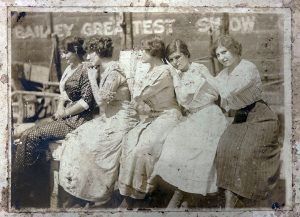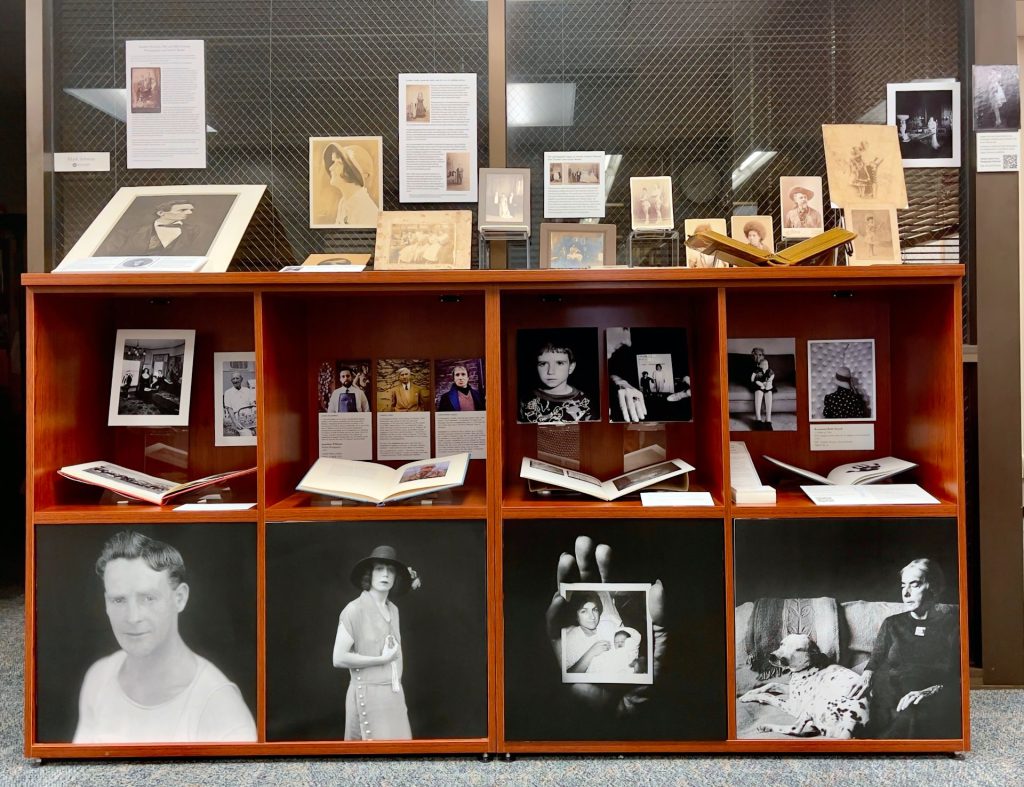A new exhibition on display in the Special Collections Reading Room through December 22, 2022, focuses on photographic portraiture from the 19th and 20th centuries.
Shadow Portraits: 19th and 20th Century Photography and Artist’s Books
Portraits have long offered the promise of memorializing or fixing a person’s external likeness, of freezing a moment in time. Sometimes the images are whimsical and fun, other times they are grotesque, vapid, ridiculous, or gritty. But the best of these portraits present deeper and perhaps more tantalizing prospects—they capture an essence that somehow both reflects and reveals the sitter. They offer the chance to find meaning in appearances and in the imagined relationship between the portrait subject, the unseen photographer, and the viewer.
“One day, quite some time ago, I happened on a photograph of Napoleon’s youngest brother, Jerome, taken in 1852. And I realized then, with an amazement I have not been able to lessen since: ‘I am looking at eyes that looked at the Emperor.’”
— Roland Barthes, Camera Lucida: Reflections on Photography
From the outset, photography changed the way that people interact with images of themselves and others. The rise in reproducibility led to an exchange of rarity for ubiquity, changing the social codes embedded in owning one’s image, or that of a loved one. Photography also brought collecting to the middle class. It enabled celebrity (or at least notoriety) to easily spread and this commodification of famous likenesses became mingled with the acquisition of personal representations.

Scrapbooks mixing personal and celebrity photographs were common in the Victorian era, and the influence of the “influencers” can be seen early and often in studio portraits. The late 19th and early 20th centuries ushered in a massive demand for studio work and collectible celebrity portraits, many of which can be seen in this exhibit as pictures of circus stars such as Lavinia Warren, May Wirth, and Lillian Leitzel.
The works in this exhibit are centered primarily around photography and are mostly portraits, though some artist’s books and self-portraits are included. Many of the works examine the fluidity of the relationships of their creators to their subjects, whether intimate or professional, but all aim to distill a deeply human connection and to pass that along to the viewer.
View the exhibition or schedule a class session in Special Collections
Shadow Portraits: 19th and 20th Century Photography and Artist’s Books is on view through Thursday, December 22, 2022, any time the Special Collections Reading Room is open. Please contact Rebecca Fitzsimmons (rlfitzs@IllinoisState.edu) for additional information or if you would like to arrange a class visit.
![Black and white photograph of a smiling man in a cap holding the bridles of three horses standing partially under a tent awning. Scratches and dots caused by damage to the emulsion appear over much of the image.]](https://isunews-dev.illinoisstate.edu/news/files/2022/08/Clarke2-764x509.jpg)


